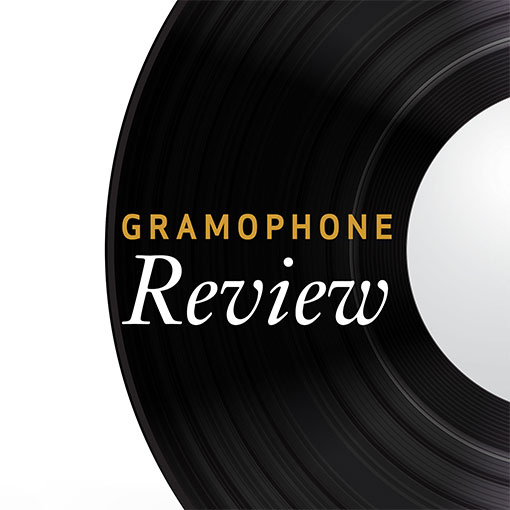Gade Choral Works
View record and artist detailsRecord and Artist Details
Composer or Director: Niels (Wilhelm) Gade
Label: Da Capo
Magazine Review Date: 2/1997
Media Format: CD or Download
Media Runtime: 63
Mastering:
DDD
Catalogue Number: 8 224051

Tracks:
| Composition | Artist Credit |
|---|---|
| (The) Elf-king's daughter (Elverskud) |
Niels (Wilhelm) Gade, Composer
Guido Paëvatalu, Baritone Kirsten Dolberg, Mezzo soprano Michael Schønwandt, Conductor Niels (Wilhelm) Gade, Composer Susanne Elmark, Soprano Tivoli Concert Choir Tivoli Symphony Orchestra |
| Spring Fantasy (Forårsfantasi) |
Niels (Wilhelm) Gade, Composer
Anne Margrethe Dahl, Soprano Elisabeth Westenholz, Piano Gert Henning-Jensen, Tenor Kirsten Dolberg, Mezzo soprano Michael Schønwandt, Conductor Niels (Wilhelm) Gade, Composer Sten Byriel, Bass-baritone Tivoli Symphony Orchestra |
Author: Robert Layton
Gade’s representation in the catalogue has increased enormously over the last few years and the present issue brings us a fourth version of Elverskud. This is variously translated as Elf-shot or The Fairy Spell and as it is here, The Elf King’s Daughter. In his Short History of Scandinavian Music (Faber & Faber: 1963), John Horton opted for The Erl-King’s Daughter, so we are quite spoilt for choice! Kitaienko’s performance with Danish National Radio forces appeared on Chandos five years ago, and was coupled with Echoes from Ossian and the Five Songs, Op. 15. To be frank it is not easy to choose between the two versions. Michael Schonwandt gives the brisker, fresher account of the score, an impression aided, perhaps, by the marginally more forward recording balance. He has the advantage of better singing, and those troubled by Anne Gjevang’s vibrato on the Chandos disc will prefer Kirsten Dolberg, a lovely singer. Dmitri Kitaienko is always gentle and sometimes more poetic, though he rather drags the short Prologue, making it four as opposed to the three minutes or so on the new disc. How right Horton was to say that the opening of the second half which evokes the moonlit world of the Fairy Hill was “among the most beautiful orchestral writing of the romantic period in any country”!
The new issue clearly scores over the Chandos in one respect: its choice of coupling. The Spring Fantasy (“Forars-Fantasi”) was written in 1852 after Gade’s return from Leipzig, where he had briefly succeeded Mendelssohn as conductor of the Gewandhaus Orchestra. By this time Gade was in his early thirties and held several key positions in Copenhagen both as a conductor and organist, and had just been knighted. So he felt secure enough to marry: his fiancee was the daughter of Denmark’s senior composer, J. P. E. Hartmann. There was not only a difference in age and status between the two men but one of class too. Hartmann had had a relatively sheltered background and a legal as well as musical training while Gade was not upper-crust. The Spring Fantasy was a betrothal gift for his fiancee, Sophie Hartmann. (Her wedding present was to be the Fifth Symphony for piano and orchestra.) An atmosphere of spring and happiness pervades the Fantasy which is one of the composer’s sunniest works, though their happiness was cut short a few years later when Sophie died after having given birth to twins, one of whom also died.
All four soloists here are admirable and, as in the case of the Fifth Symphony, there is a prominent part for the piano, expertly played here by Elisabeth Westenholz. Its Mendelssohnian opening with clarinet and piano almost misleads one for a moment into thinking one has wandered into the wrong piece. It is a lovely work and this supersedes its earlier recording from the 1970s under John Frandsen (recently reissued on EMI Matrix). Recommended.'
The new issue clearly scores over the Chandos in one respect: its choice of coupling. The Spring Fantasy (“Forars-Fantasi”) was written in 1852 after Gade’s return from Leipzig, where he had briefly succeeded Mendelssohn as conductor of the Gewandhaus Orchestra. By this time Gade was in his early thirties and held several key positions in Copenhagen both as a conductor and organist, and had just been knighted. So he felt secure enough to marry: his fiancee was the daughter of Denmark’s senior composer, J. P. E. Hartmann. There was not only a difference in age and status between the two men but one of class too. Hartmann had had a relatively sheltered background and a legal as well as musical training while Gade was not upper-crust. The Spring Fantasy was a betrothal gift for his fiancee, Sophie Hartmann. (Her wedding present was to be the Fifth Symphony for piano and orchestra.) An atmosphere of spring and happiness pervades the Fantasy which is one of the composer’s sunniest works, though their happiness was cut short a few years later when Sophie died after having given birth to twins, one of whom also died.
All four soloists here are admirable and, as in the case of the Fifth Symphony, there is a prominent part for the piano, expertly played here by Elisabeth Westenholz. Its Mendelssohnian opening with clarinet and piano almost misleads one for a moment into thinking one has wandered into the wrong piece. It is a lovely work and this supersedes its earlier recording from the 1970s under John Frandsen (recently reissued on EMI Matrix). Recommended.'
Discover the world's largest classical music catalogue with Presto Music.

Gramophone Digital Club
- Digital Edition
- Digital Archive
- Reviews Database
- Full website access
From £8.75 / month
Subscribe
Gramophone Full Club
- Print Edition
- Digital Edition
- Digital Archive
- Reviews Database
- Full website access
From £11.00 / month
Subscribe
If you are a library, university or other organisation that would be interested in an institutional subscription to Gramophone please click here for further information.





